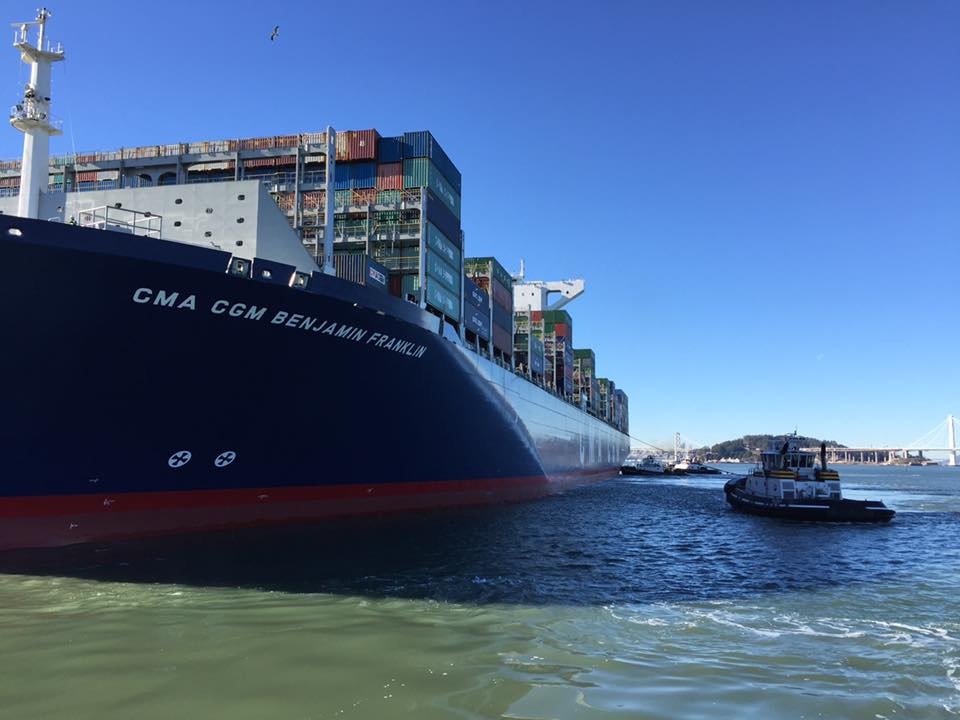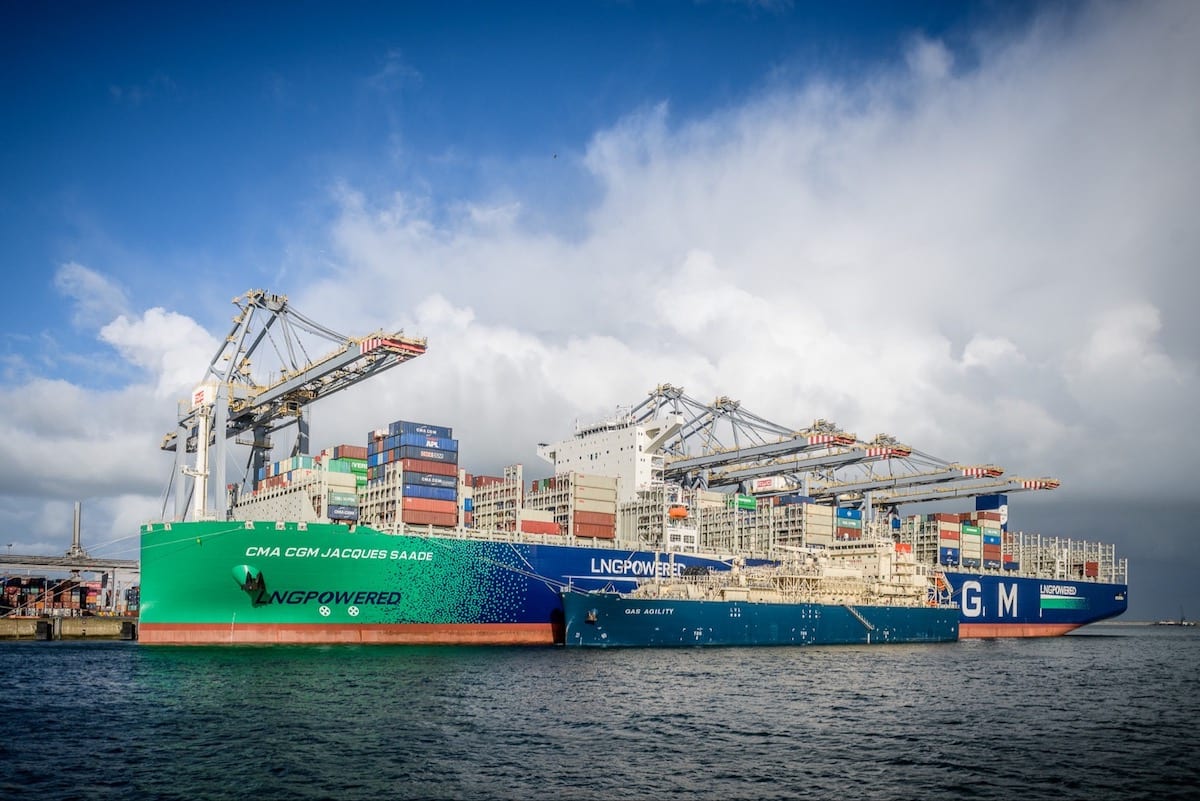The CMA CGM Benjamin Franklin arrives in San Francisco Bay, December 31, 2015. Photo: Mike Schantz
By Mike Wackett
(The Loadstar) — Christmas saw the 17,859 teu CMA CGM Benjamin Franklin become the largest container vessel ever to call at a US port when it arrived at Los Angeles from China on December 26.
The deployment of the newbuild ultra-large container vessel (ULCV) to the transpacific route, which also included a call at the neighbouring port of Oakland, was regarded by some analysts as a test of the capacity of US west coast ports to handle the biggest boxships afloat that had hitherto been regarded as only being viable on the Asia-Europe tradelanes.
To all intents and purposes, the call at APM Terminals’ Pier 400 in LA was a resounding success: an exchange of 11,200 containers in a 56-hour stay included the deployment of up to nine gantry cranes.
According to CMA CGM’s forward plan, the new ship is scheduled to make a return call to the USWC in mid-February as part one of the loops of the Ocean 3 network, which normally operates with seven ships of around 11,400 teu.
It would be a very big step-up for USWC ports, and not least for their landside operations, to handle ships as big as the CMA CGM Benjamin Franklin on a regular basis, and if its further calls prove equally seamless then other carriers will no doubt look to follow in the French container line’s lead.
Indeed, with many more of these behemoths due this year, and the European market showing no immediate signs of improvement, ocean carriers will be relieved that they could be saved the embarrassment of laying-up a newbuild ULCV by redeploying the ships on the transpacific route, albeit on a temporary basis.
Drewry notes that there are now more than 50 ships of 10,000 teu or above deployed on the Asia-USWC route, whereas at the beginning of 2014 there were only 14 on the tradelane.
However, a rush of these new breed of ULCVs to the transpacific trade could herald big problems for USWC ports, suggests Drewry – as it had at European ports that had already graduated to accommodating regular visits from 13,000 teu ships – the previous workhorses of the trade.
Drewry highlights the additional quayside problem for terminals working the ships in that their size, in terms of length overall, has not increased in proportion with their teu intake.
The unkindly dubbed “fat ladies” have just got wider and deeper, and boxes are stacked higher, thus the number of gantry cranes allocated to the operation cannot be increased in direct proportion to the ship’s size.
Moreover, as has already been experienced at US west coast ports with previous vessel upgrades, more cargo squeezed onto fewer ships equals greater container transport peaks and additional pinch points in the supply chain.
Notwithstanding ad-hoc calls, Drewry concludes that until productivity is improved at USWC ports, particularly in regard to landside efficiency, they are not yet in a position to handle 18,000 teu containerships on a regular basis.
The Loadstar is fast becoming known at the highest levels of logistics and supply chain management as one of the best sources of influential analysis and commentary.
Check them out at TheLoadstar.co.uk, or find them on Facebook and Twitter.
Unlock Exclusive Insights Today!
Join the gCaptain Club for curated content, insider opinions, and vibrant community discussions.

 Join The Club
Join The Club













